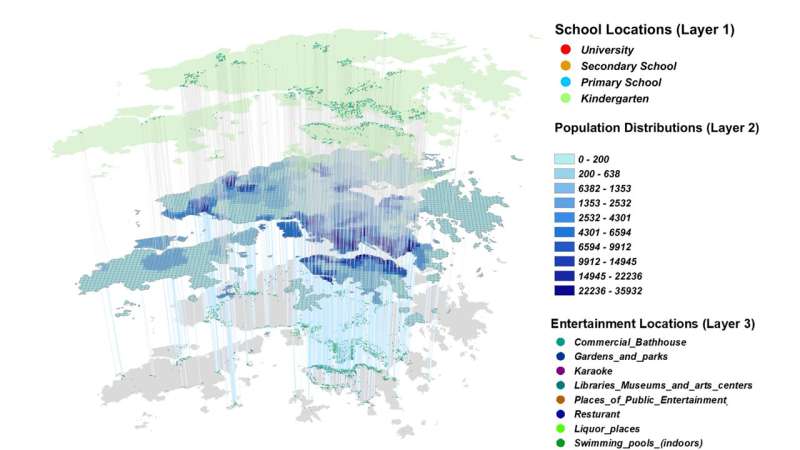Targeted interventions to contain pandemics, minimize societal disruption

The COVID-19 pandemic has led to more than 218 million infections and over 4.5 million deaths as of Sept. 3, 2021. Nonpharmaceutical interventions (NPIs), such as case isolation, quarantining contacts, and the complete lockdown of entire countries, were implemented in an effort to contain the pandemic. But these NPIs often come at the expense of economic disruption, harm to social and mental well-being, and costly administration costs to ensure compliance.
Given the slow rollout of vaccination programs worldwide and the rise of several mutations of the coronavirus, the use of these types of interventions will continue for some time. In Chaos, researchers in China use a data-driven agent-based model to identify new and sustainable NPIs to contain outbreaks while minimizing the economic and social costs.
"Based on the proposed model, we proposed targeted interventions, which can contain the outbreak with minimal disruption of society. This is of particular importance in cities like Hong Kong, whose economy relies on international trade," said author Qingpeng Zhang.
The researchers built a data-driven mobility model to simulate COVID-19 spreading in Hong Kong by combining synthetic population, human behavior patterns, and a viral transmission model. This model generated 7.55 million agents to describe the infectious state and movement for each Hong Kong resident.
Since mobile phone data is difficult to obtain in most countries, the researchers calibrated their model with open-source data, so it could be easily extended to the modeling of other metropolises with various demographic and human mobility patterns.
"With the agent-based model, we can simulate very detailed scenarios in Hong Kong, and based on these simulations, we are able to propose targeted interventions in only a small portion of the city instead of city-level NPIs," said Zhang.
The researchers found that by controlling a small percentage (top 1%-2%) of grids in Hong Kong, the virus could be largely contained. While such interventions are not as effective as citywide NPIs and compulsory COVID-19 testing, such targeted control has the benefit of a much smaller disruption of society.
The proposed model leading to the targeted interventions has the potential to guide current citywide NPIs to achieve a balance between lowering the risk and preserving human mobility and economy of the city.
"Our findings also apply to other major cities in the world, such as Beijing, New York, London, and Toyko, as COVID-19 is likely to be around indefinitely, and we have to learn how to live with it," said Zhang.
More information: "Sustainable targeted interventions to mitigate the COVID-19 pandemic: A big data-driven modeling study in Hong Kong" , Chaos, aip.scitation.org/doi/full/10.1063/5.0066086
Journal information: Chaos
Provided by American Institute of Physics




















